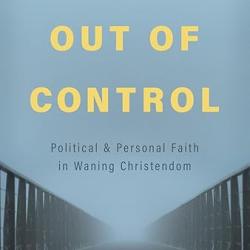Part 3: Response to The Gospel as Center, Chapter 3: “The Gospel and Scripture”
This is the third of a series of responses to the book The Gospel as Center: Renewing Our Faith and Reforming our Ministry Practices edited by D. A. Carson and Timothy Keller. All the authors are members of The Gospel Coalition.
Chapter 3, “The Gospel and Scripture: How to Read the Bible” is by Mike Bullmore, pastor of Crossway Community Church of Kenosha, Wisconsin.
I approached this chapter expecting a defense of the Bible’s inspiration and inerrancy, but those are not its subject. The author states the purpose of the chapter near its beginning: “this chapter suggests and unpacks two particular connections between Scripture and the gospel: the gospel is a cause of Scriptural revelation, and the gospel is an effect of scriptural revelation. In other words, God’s great, eternal purpose of redemption (which is expressed in the gospel) gives rise to the Bible, and the Bible serves to accomplish God’s purpose in the gospel.” (p. 41)
I found nothing particularly objectionable in this chapter which is mainly about hermeneutics. The author posits a fairly radical Christocentric interpretation of the whole Bible. He says that every passage of the Bible points to Jesus. (p. 49) Also, without the influence of the Holy Spirit it is impossible to understand the Bible. (p. 51) He affirms the verbal inspiration and infallibility of the Bible without using those terms. (p. 44)
According to Bullmore, we should follow two approaches when reading the Bible: 1) Read it as continuous narrative (or history), and 2) Read it as a compendium of God-inspired perspectives (or theology). (pp. 51-54) “The real narrative is the unfolding of God’s purpose and plan.” (p. 51) Thus, we should read “along the biblical narrative.” But we should also read “across the Scriptures.” The first approach seems to be about grasping the “big picture” of Scripture’s story which is “the unfolding of God’s purpose and plan.” The second approach seems to be about deriving a system of truths from Scripture. “In the end, both approaches lead us to Christ.” (p. 53)
Except for the implicit assumptions of verbal inspiration and inerrancy, this chapter could have been written by Karl Barth. The author tries to tie “the gospel” and “Scripture” together, but he also seems to be promoting a distinction between them. The “gospel” is the Sache (subject matter) of Scripture. I was expecting more emphasis on the Bible’s inerrancy as a propositional revelation.
Now, let me digress a moment to relate this chapter to a Baptist controversy that I think also has to do with the larger contemporary controversy among evangelical theologians.
In 2000 the Southern Baptist Convention revised its Baptist Faith and Message. It was first written in 1925 by a committee led by E. Y. Mullins, then president of Southern Baptist Theological Seminary. Mullins was a moderate Baptist by today’s standards (which is why he is out of favor by both conservatives and “bapto-Catholics”). The BF&M was revised in 1963. The 1963 version says “The criterion by which the Bible is to be interpreted is Jesus Christ.” The 2000 revision says “All Scripture is a testimony to Christ, who is himself the focus of divine revelation.”
My argument would be that the Bullmore’s chapter on Scripture fits both statements. At the end of it, a person is justified in believing the author is saying that Jesus Christ is the only right way to understand Scripture. “The Bible is all about Jesus.” (p. 49)
Why did the 1999 committee that revised the BF&M change the wording to delete the 1963 statement that “The criterion by which the Bible is to be interpreted is Jesus Christ?” The reason I heard was that the committee thought that statement was misused by neo-orthodox professors to deny the plenary inspiration and authority of Scripture and its inerrancy. I have never been able to understand that. That Jesus Christ is the criterion by which the Bible is to be interpreted seems perfectly orthodox to me. All the church fathers would have agreed. Certainly Luther would have agreed. The Anabaptists would have agreed. It seems to me Mike Bullmore would agree. If it’s in this book, surely Carson and Keller agree.
The general thrust of this chapter is completely acceptable to me. I may disagree with a secondary point or two, but even in those cases it would depend on what is meant. The chapter is very broad and vague about flashpoints of controversy such as inerrancy. The closest the author comes to affirming inerrancy is that “the Bible is trustworthy and true.” (p. 44)
I would like to know why this chapter, written in this specific way, is included in this book. The book is written to correct evangelicals who have strayed or are straying from the gospel. Which evangelicals would have any problem with this chapter (except perhaps fundamentalists who would want a stronger statement of inerrancy?)
I, for one, completely agree that the gospel of Jesus Christ is the Sache of Scripture and that it should be the criterion of biblical interpretation, which, I judge, is the import of this chapter even if the author doesn’t say it quite that way.












